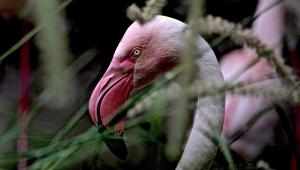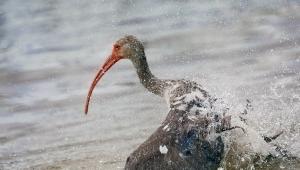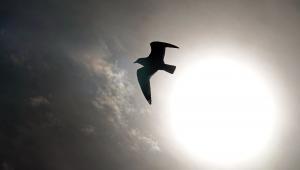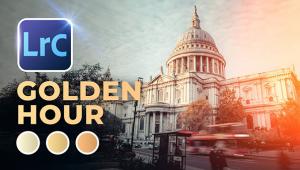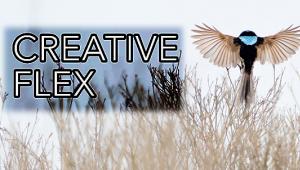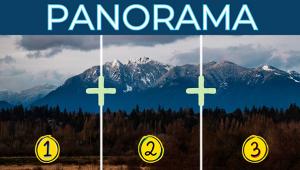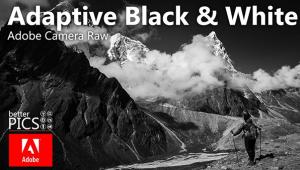Profile: An Interview With Jerry Ghionis: Fashion, Portraiture & Spontaneity
Mention the name Jerry Ghionis to any wedding photographer and you will immediately see respect and admiration in their eyes. Jerry shot to prominence by winning the International Wedding Album of the Year Award at Wedding Portrait Photographers International (WPPI) a record eight times and was also named by WPPI as one of the top five wedding photographers in the world. With a style that combines fashion, portraiture, and spontaneity, his work is instantly recognizable. Sought after by wedding clients from around the world, Jerry has expanded his base to become a wildly popular teacher and lecturer and now even a product developer. I even hear he does a mean karaoke but I’ve yet to witness that!

“I place a big emphasis on the storytelling aspect of the day, as well as shooting with empathy for more striking and powerful images.”
I recently spoke with Jerry and his wife Melissa to get an insider’s look at what is behind his extraordinary success and thought it would serve as both educational and inspirational to all aspiring wedding photographers.

Shutterbug: What inspired you to become a photographer?
Jerry Ghionis: I was given my first camera by my brother when I was only 15 years old and loved photography immediately. I’ve now been shooting as a professional photographer for over 20 years and started specializing in weddings almost straight away. When I began, I approached a very prominent studio at the time and assisted them for a year and a half with no pay. I carried bags until they finally hired me full-time as a professional photographer. I’ve been photographing weddings, portraits, and fashion professionally ever since.
SB: I know you work worldwide, but how do your clients hear about you?
JG: Most of my clients find me by referrals from past clients or vendors. These referrals are very important to me and I’ve worked hard for them. I also advertise in a few of the larger wedding magazines and that has become one of the most common ways that clients find me. In addition, I have many clients tell me that they find me through Google searches. I’ve spent quite a bit of time and effort on my website as well.
I wanted a website where my clients would be able to catch a glimpse of my personality through “behind the scene” videos as well as my work by viewing entire albums and single images. I took all my ideas to a company that specializes in creating photography websites (www.bigfolio.com) and they brought my vision to life. I now have clients coming in for an initial meeting and telling me that they remember when I photographed a certain couple and I realize that it’s all because they’ve seen it on the website. They already feel a connection with me before they even meet me.
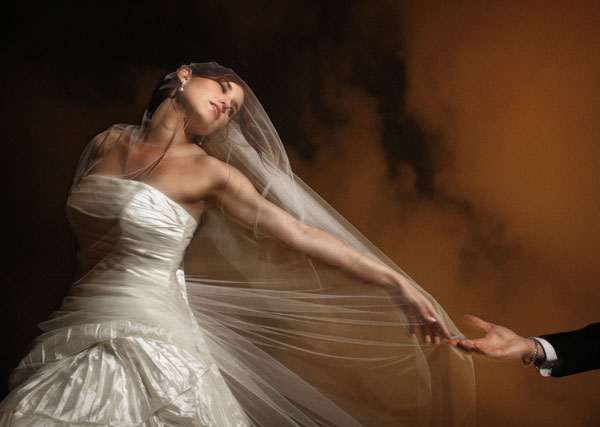
SB: How would you describe your style of shooting?
JG: My style is very glamorous and natural at the same time. My images tend to have the finesse of a pose with the natural feel of a candid image. I place a big emphasis on the storytelling aspect of the day, as well as shooting with empathy for more striking and powerful images. But in addition to that, I also make sure that I never leave a wedding without creating several “wow” shots. I certainly focus on the glamour and the beauty of the people and the wedding itself. But I focus on that as much as on the story of the day. I believe in not only capturing natural magic as it’s happening, but creating magic of my own, too. Whether the wedding was a fairy tale or not, it will be remembered as one if you hire me to photograph it.

SB: You are known for wedding photography, do you do other types of work?
JG: I also do quite a bit of portraiture, fashion, and boudoir work.

SB: What do you take for gear on your weddings and how many assistants do you use?
JG: I travel pretty light when I am shooting a wedding. My gear includes: a Nikon D4; a Nikon D3S; a 70-200mm f/2.8G ED VR II; a 100mm f/2.8 Macro; a 14-24mm f/2.8G ED; a 24-70mm f/2.8G ED; an 85mm f/1.4; a 50mm f/1.4; two SB-910 flashes; PocketWizards; a 5-in-1 Reflector; and an Ice Light LED light. And I put it all into a Think Tank Airport Security V 2.0 bag.
I don’t really have any second shooters per se. I do work with an assistant at weddings, who also happens to be my wife. She is also a photographer and she occasionally shoots at the wedding, but that is rare. I am always shooting for the album and find it more distracting when I have someone else’s images to work with. The bonus in this case, of course, is that I also get to go home with my assistant.

SB: What is your favorite lens? Favorite piece of equipment?
JG: My favorite lens is the 70-200mm VR II. I usually shoot over 90 percent of the wedding day with this lens.
As for my favorite piece of equipment, that would probably be the Ice Light. The Ice Light is a continuous portable LED light source that I created and that is manufactured by Westcott (www.theicelight.com). It gives off a very beautiful quality of light, similar to window light and is portable so I can easily take it on every shoot.

SB: It seems that, like you, many of the top wedding photographers are from Australia. Is there a reason for this?
JG: I am proud to be from a country that is known for its wedding photographers. A healthy competitive spirit and mutual respect for fellow photographers has lifted our game. You become a better player, playing with better players.
SB: What one piece of advice would you give to new wedding photographers?
JG: Success in wedding photography and especially in performing on the wedding day is more about your communication skills and your listening skills and knowing how to read people. That will go a long way in making you a great photographer rather than focusing on how technically brilliant you are. The ability to have an endearing and attractive personality and the ability to work under pressure while still being technically proficient is especially important. You almost need to be like a chameleon in the sense that you need to know how to be relaxed and more down to earth at a casual wedding and at the same time be able to carry yourself professionally when you’re at a high society wedding.
I also believe that assisting at weddings is the best training for any photographer. At the very first wedding that I assisted, I probably learned more than in all of the time I spent in school. And that was because I was getting on-the-job, real-world training. At that first wedding I was taught about the direction of light, how to use flash, interacting with clients, working under pressure, working under time constraints. I literally just carried bags and assisted a photographer for a year and a half with no pay while I was working at a camera store selling cameras. I did all of that just so I could be involved in the industry.
And that’s because when you’re photographing a wedding, you’re actually shooting much more than that. You’re shooting a wedding, portraits and fashion; you’re shooting photojournalistically, shooting product (all the details that you need to document), landscape, etc. So you’re photographing in all these different genres and under time constraints, weather constraints, different cultures and dealing with different personalities, so I truly believe that a really good wedding photographer can pretty much shoot in any genre. Artistically, don’t be safe or stay in your comfort zone by going to “pose number 23 in location number 37.” Comfort zones have never been synonymous with artistic expression.
I encourage new photographers to be as passionate about their business as they are about their photography. Consider yourself a businessperson first who happens to be a photographer. As a business owner, ask yourself, “Am I working in my business or on my business?” Surround yourself with great people. Your studio is only four walls without good staff. Stop being a control freak and get some help. Educate yourself. Seminars and workshops can literally change your life. After all, knowledge is power. Don’t be too precious about the work.

SB: And what about the marketing side?
JG: When it comes to marketing your new business, you should work on marketing that costs you nothing by first asking your clients and vendors for referrals and maximizing relationships with people who can help you. Also, try a same-day slide show at the reception. It’s the best direct marketing you will ever do and you can also charge good money for it. If you are going to invest in advertising, don’t think about the advertising dollars you are parting with and think instead about the return. Whenever an advertising opportunity presents itself, ask yourself, “Is there a better way I can spend this money?” And finally, don’t forget to consider yourself a brand. Build it and they will come.
One of my favorite mantras has always been that I don’t focus on being the best; I just focus on being better than last week. I believe this is one of the keys to being successful and consistently creating beautiful images. By doing that, you become the best that you can be—you realize your own potential.

SB: Are you involved in video at all?
JG: No. I played around with it once during a personal shoot. But I have enough pressure and enough to think about during a wedding day as the sole photographer that I decided I don’t need to add the pressure of including video and editing it afterward.
SB: Where do you see the wedding photography market in five years?
JG: Unfortunately, I see the wedding market shrinking more than ever before. It will only get harder. Only true masters of their craft or masters of marketing will survive and maintain their longevity. Technology is making photography more accessible than ever, which lessens the distinction between a pro and an amateur photographer.

Contacts
Website: www.jerryghionis.com
Blog: www.jerryghionisblog.com
Seminars, Workshops, Educational Products: www.icesociety.com
- Log in or register to post comments


















